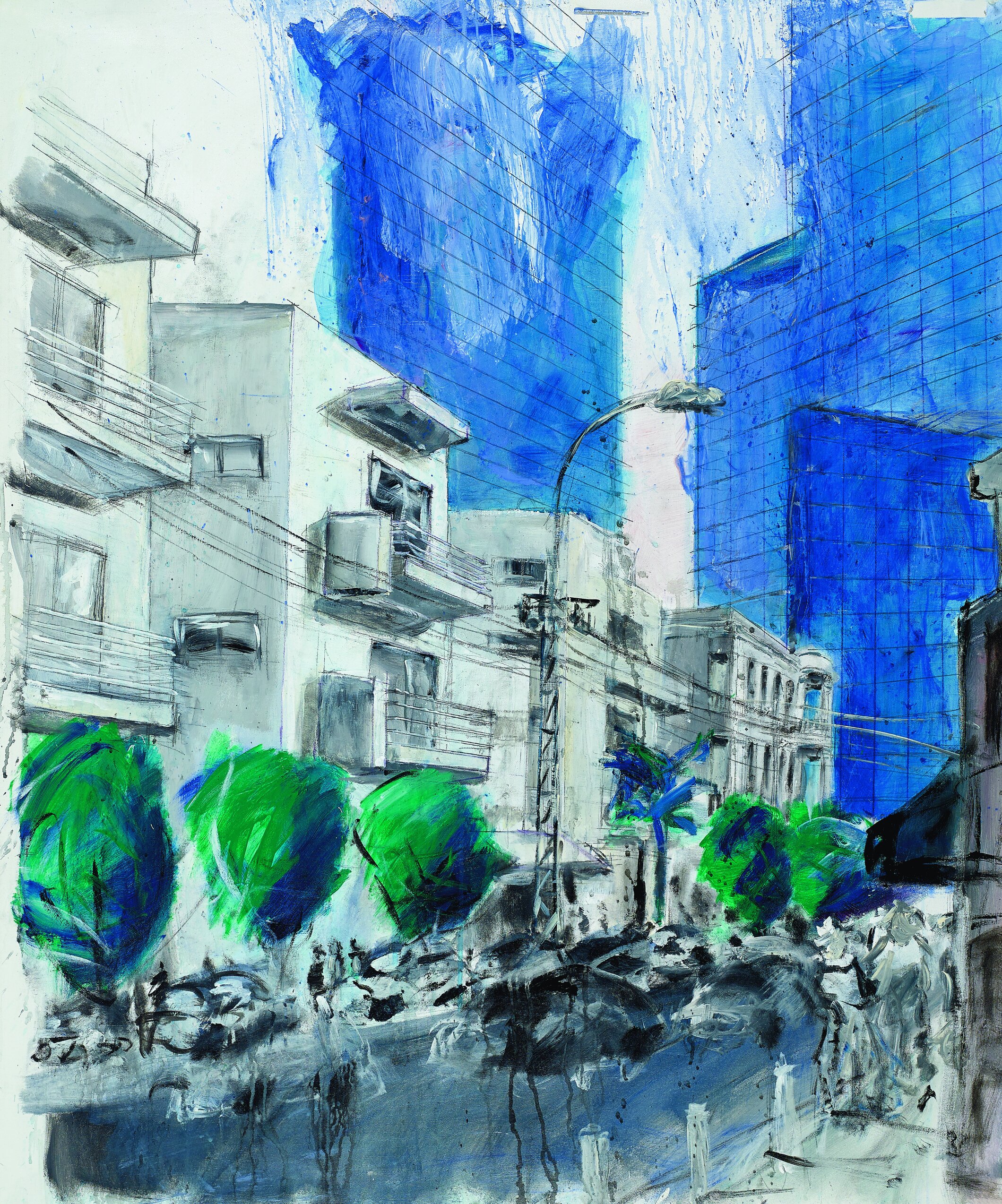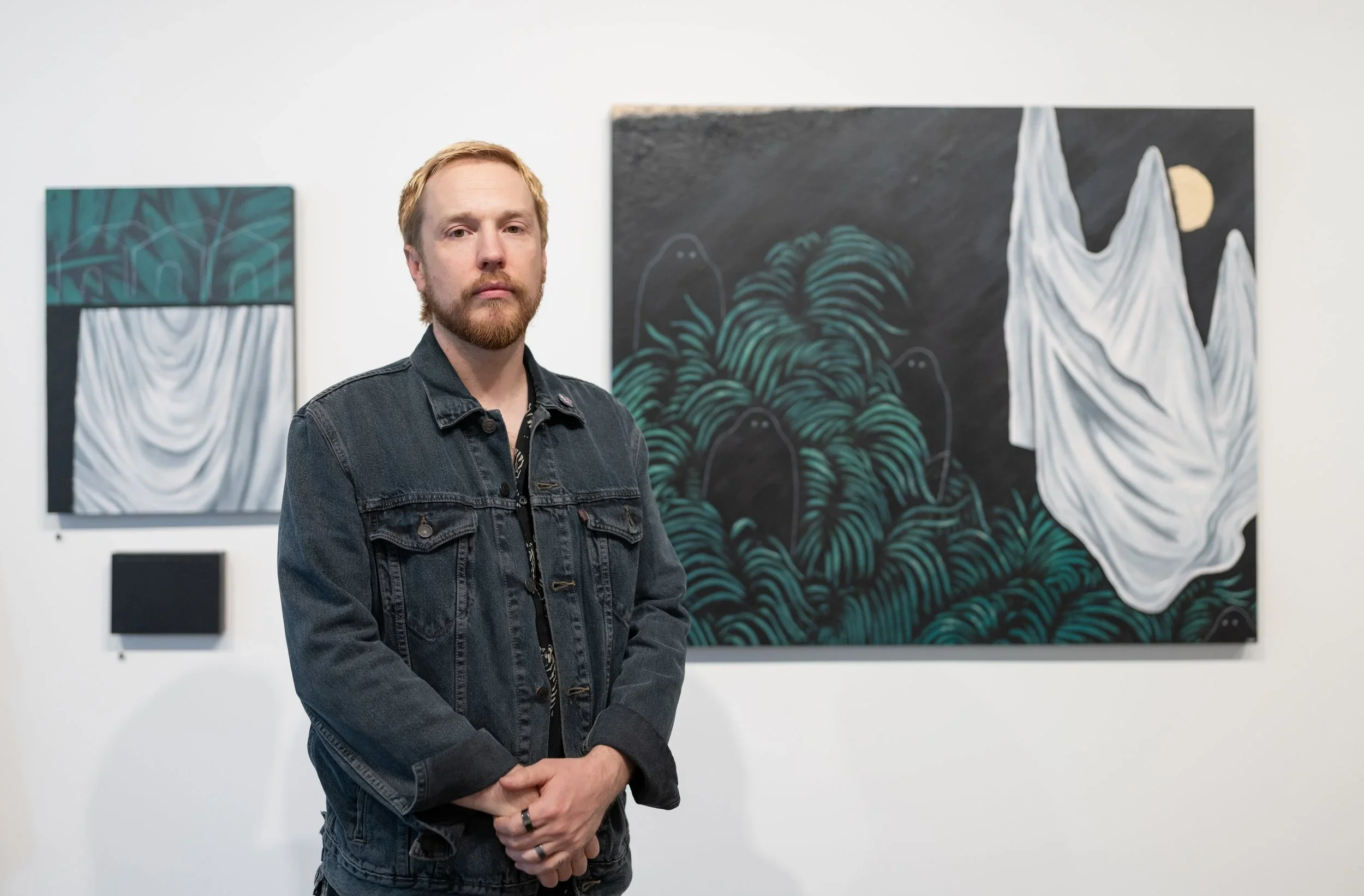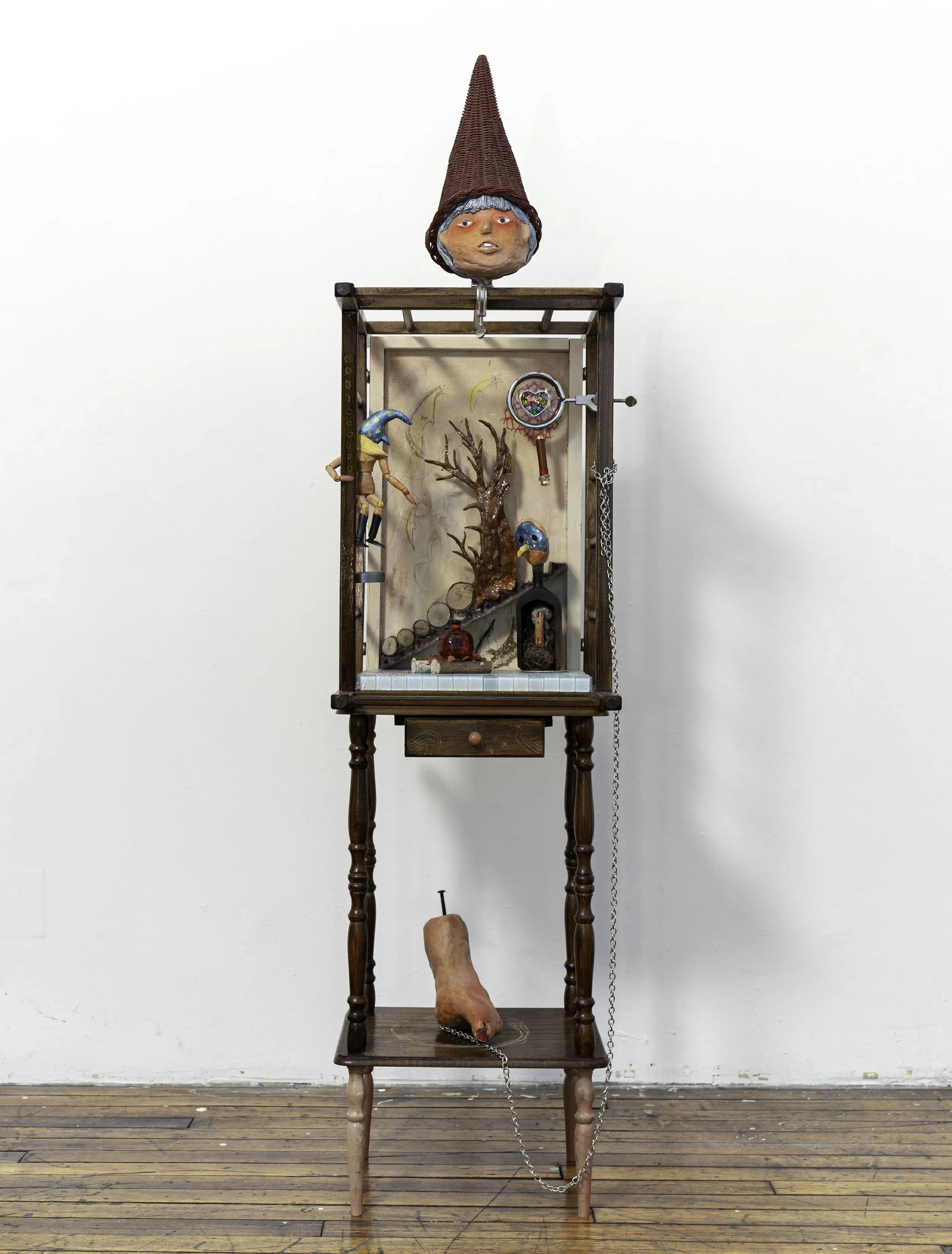10 Questions with Ami Shinar
Al-Tiba9 Art Magazine ISSUE13 | Featured Artist
Born and living in Tel Aviv, Israel, Ami Shinar graduated in Architecture and Urban Planning at the Technion, Israel Institute of Technology (1976). Practiced in Boston (1984 - 1990) and, upon returning to Israel, was nominated as Head Architect of the Ministry of Housing and Construction. Since 1991, together with his partner Amir Mann, both established one of the leading architectural firms in the country, responsible for award-winning projects such as Ramon Airport, the National Library of Israel (with Herzog &de Meuron), Haifa Waterfront, Z design Building and more. While in Boston, Ami studied painting at the Museum of Fine Arts School and has practiced painting ever since with notable artists in Israel. Since 2012 Ami has held five solo art exhibitions, the last of which, "My Tel Aviv" was held in Torino (2022). His book "Tel Aviv Sketches" with author Avraham Balaban (in Hebrew) was also published in 2022.
Ami Shinar - Portrait
ARTIST STATEMENT
Ami Shinar practices two parallel worlds in his creative work: Architecture and Art.
Shinar's art echoes actual situations he experiences in his hometown Tel Aviv or, in general, in Israel. Be it on the local level – such as his urban scapes - or his more politically direct series of demonstrations against the government and its corrupt politicians. Shinar's art is, therefore, much involved in his everyday reality, with the hope of opening the eyes of the viewer.
The Urban Works: For the past three years, Ami Shinar is mainly depicting places and people in Tel Aviv, especially in its less flashy neighborhoods. Shinar's eye and hand capture the residents, colorful characters who are not always visible and do not always have a voice. In numerous watercolors, Shinar portrays these people, often work migrants or refugees. The fierce urban transformation is depicted in his series of the new skyscrapers that overshadow the old Bauhaus buildings as dark faceless obelisks, while the old shabby buildings still reflect richer human scale. The tension between the two is his main motive.
The Political Work: Shinar touches upon issues of polarizing social and political issues. His paintings of 2020 of the mass demonstrations against governmental arbitrariness are relevant also in 2013 even more so. Many of the people depicted in these works, individually and collectively, reflect the free civic, democratic spirit. In his latest works, he describes the "Handmade Tale" parades of women in red protesting with dignity against the government's acts to weaken Democracy. In previous works, Shinar portrayed a series of political "leaders" - but who have no faces.
Architecture: At the same time, his architectural studio – Mann-Shinar Architects, is a leading one in Israel, responsible for large-scale public buildings, a new airport, and lately, the National Library of Israel in Jerusalem (in collaboration with Herzog & de Meuron).
Amir Mann and Ami Shinar believe that architecture is an important resource of life, affecting our everyday surroundings, from the interior of our bedroom to the cities in which we live.
The architects say: "We attempt to create the right balance and spatial hierarchy when developing a place. Each public building that we design, for example, has a significant social element: a meeting space as a focal point, sometimes at a public scale".
Amir Mann and Ami Shinar create their architectural vocabulary based on local materials with an eye to the world. They believe in transformation – preservation and innovation, complement and contrast. The coming exhibition in Venice presents only a glimpse at the architectural oeuvre of Mann-Shinar Architects, yet it reveals this duality in Shinar's work – the twofold expression of the weathered and the new; Art and Architecture, each on its own, yet inseparable.
Rabin Square demonstration, acrylic on canvas, 100x100 cm, 2021 © Ami Shinar
Get your limited edition copy now
INTERVIEW
You work across different mediums and disciplines, ranging from painting to large-scale architectural projects. But who is Ami Shinar in three words?
Architect, Artist, Humanist (not necessarily in that order).
How did you develop into the artist you are today?
I have always drawn and painted intensively. I can point out a breakthrough during my architectural studies; I had the privilege to practice art with inspiring tutors such as Itzhak Danziger and Yoav Bar-el. Danziger examined all my paintings at the time, and I still remember him saying: "You should go abroad and find your own language over there". Before graduating from architecture, I already had my first solo art exhibition. And a few years later, I did go abroad for almost six years – to Boston. Working there as an architect as well as practicing art, opened my eyes.
In the last three years, I have worked with curator Vera Pilpoul who assists me a lot in my development as an artist today. Vera Pilpoul and Ermanno Tedeschi curated my exhibition in Torino last year and in Venice in 2023.
Ahad Haam Street, acrylic on canvas, 100x100 cm, 2022 © Ami Shinar
When did you decide you wanted to be an artist and an architect? Did these two different sides always coexist, or did you get interested in both at different times?
As a teenager, I romantically wished to be a painter living in a Parisian attic. But the practical mind of my Jewish mother prevailed: One needs to gain a real profession. Architecture, which began as a sort of compromise, turned out to be a great love. Establishing an architectural studio has been a real challenge. We, my partner Amir Mann and myself, started it just the two of us. Today we employ 40 architects. During the hard early years of finding our way in the world of architecture, my artistic dream was pushed aside but never really disappeared. It erupted at times, and in the last ten years – more than ever.
How does your architectural work influence your art and vice versa?
As an architect, I often make the first sketches by hand – a disappearing skill in the age of computer design and the upcoming worlds of AI. As an artist, I get inspired by urban and architectural subjects, like the many Bauhaus buildings of the "White City" of Tel Aviv. These two seemingly different occupations actually feed each other. I think that in my "urban paintings," one can certainly see the architect behind.
Rabin Square demonstration 3, acrylic on canvas, 70x50 cm, 2021 © Ami Shinar
Rabin Square demonstration 2, acrylic on canvas, 70x50 cm, 2021 © Ami Shinar
Your work is mainly divided between Urban Works and Political Works. Can you tell us more about those?
My Urban Works are "political" in a subtle way, as I show the immense urban (and social) transformation occurring in my city: Numerous new tall buildings overshadowing the old urban fabric. This is a controversial issue that I am also aware of as an architect. But one cannot forget that the urban essence is its people. Walking in the poorer sections of Tel Aviv and drawing old houses as well as people's faces – some of them are "transparent" work immigrants – this is art with a political statement.
My Political Works, also set in the urban space, show some demonstrations held in Tel Aviv during the last three years. For me, this is an urban happening of the profound democratic foundation of the city.
Lately, Israel and Tel Aviv have seen massive demonstrations and political unrest. As an artist working around political themes, what do you think is the importance of art in addressing such themes?
I started painting the vast demonstrations against the Prime Minister already in 2020 – then it was about government corruption. But this year, my country is facing a severe crisis. The unprecedented demonstrations, in which I am involved body and soul, are now against the government's threat to undermine democracy. One of its iconic manifestations is the "Handmaid's Tale" parades (women in red), which I painted.
Will art make a difference? Probably not. But this will not stop me from expressing my feelings.
What messages do you ultimately want to convey with your art?
I strongly believe that art is not just about perfect composition, technique, etc., but may also convey a certain message.
Neve Shaanan House, watercolor on paper, 21x30 cm, 2022 © Ami Shinar
You already have a significant career with several different experiences. Is there anything else you would like to try? Any new medium or theme you would like to tackle?
Architects often say that their best project is the one they have not yet realized. I believe this is also true for my art.
What are you working on now? Do you have any new projects or series you are currently developing?
These days I am working on a political series which I hope to exhibit soon in Europe. A glimpse of it will be exhibited at the 2023 Venice Biennale.
And lastly, what do you hope the future holds for us?
I am always optimistic. Without being so, one cannot thrive in both architecture and art. As for the future – who can tell?

























